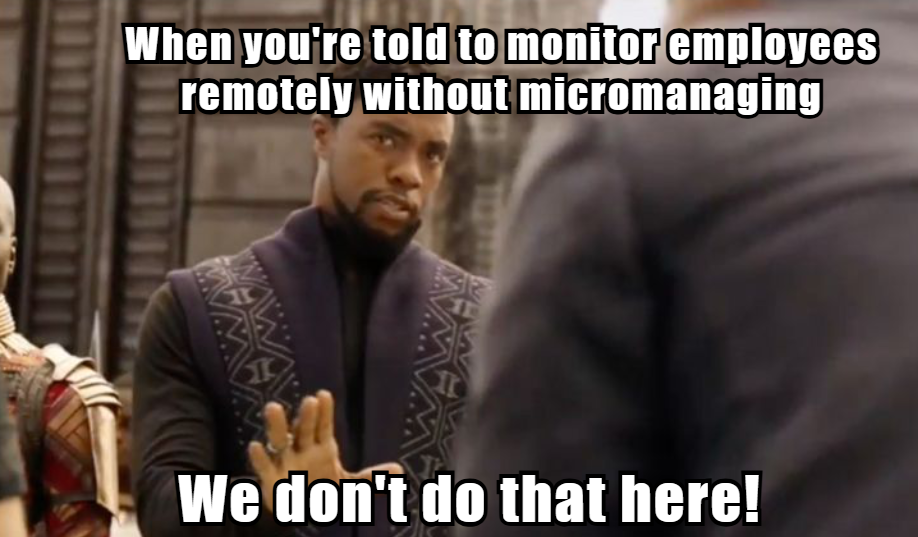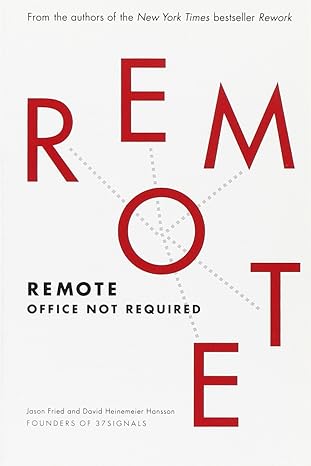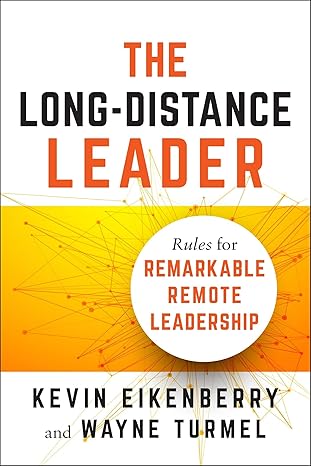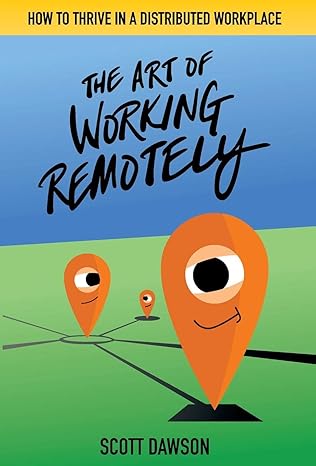Many believe that good time management alone can boost energy and simplify daily life. While helpful, true energy management goes deeper. Time-tracking tools can’t undo the energy lost to stress or poor eating habits. Let’s explore what energy management really means
Remote accountability: Ensuring team productivity
One of the main challenges of remote work is how to maintain responsibility and accountability within a team without face-to-face interaction. In this article, we'll examine key strategies for managing remote teams where a culture of accountability becomes a natural standard rather than something that needs to be imposed.
Key takeaways
Results-oriented culture over process control — evaluate achievements, not hours worked
Transparent communication — regular, structured meetings and clear expectations lay the foundation for accountability
Balance between technology and culture — tools are effective only when supported by the right culture with psychological safety
What’s remote accountability?
Without a manager’s prying eyes, every remote worker should know exactly what their tasks are, when those tasks are due, and how they’re expected to be completed. And again, it’s not about micromanagement — it’s about an organic, natural understanding of one’s responsibilities with minimal managerial input.
And it still comes with all the perks we associate with remote work, mind you — freedom, flexible schedules, and no need to sit in a humid office all day long. You get the point.
But how do you keep those freedoms intact while still maintaining a steady stream of high-quality, productive results? That’s exactly what remote accountability is all about.
When there are thousands of miles between you and your manager, a sense of responsibility has to be cultivated in different ways — it’s a much more nuanced process. The goal is to help achieve results, not to aggressively push people toward them.
Establishing clear expectations
First things first — every remote team member in your project should know exactly what’s expected of them. Not only will this keep them from wandering astray in the dark woods of work processes, but it will also help them feel confident in what they’re doing. A great recipe for a calm and low-stress working environment.
So when building your team’s daily workflows, make sure to pay attention to the following:
- Goals and objectives — what needs to be done, and what results should be achieved.
- Deadlines — when tasks should be completed. Set realistic timeframes.
- Responsibility — who is responsible for what, to prevent task-shifting or blame-shifting.
- Work format — what the workflow looks like: which tools to use, how and when to communicate.
Instruments of healthy control
Welcome to the beautiful world of CMSs and task trackers — a crucial element in managing a remote team. When all your work processes are online and digitized, it only makes sense to throw in some software to help your teammates organize their daily routines. Help them, mind you — not just add another layer of control they have to worry about during the day.
And there are quite a few options out there — you can basically cover every department and every part of your team with a dedicated task tracker. But it can turn into a pricey venture, so sticking to one platform might be the smarter move.
Taskee is one such platform. Communication, task and time tracking, file storage — this little guy has it all. A great pick for remote teams, too.
Besides our beloved Taskee, though, here are a few more options you might want to explore to see what suits your workflow best:
- For task management — Asana and Trello allow you to track task progress and create checklists.
- For communication — platforms like Slack or Microsoft Teams are ideal for daily communication, whether through chats or video calls.
- For time tracking — Clockify and Toggl help monitor employees’ working hours, making it easier to assess productivity.
- For document storage and sharing — Google Drive and Dropbox provide centralized access to important files, simplifying collaboration.
When choosing tools, it’s important to consider not just their functionality, but also how easy they are to use for the whole team. Ideally, aim to reduce the number of platforms in use and bring everything together in one unified workspace.
Fostering the culture of accountability
All those tasks and trackers are a great help, sure — but without the right in-team culture to support them? Don’t expect things to stick for more than a couple of months.

Here’s the thing — in remote teams, a culture of accountability tends to grow on its own. No watering needed.
But if you want to shape it into something that truly fits your team, go for it — and here’s what can help:
- Lead by example — the team takes its cues from the leader. If you meet deadlines, are honest in reports, and open in communication, your team will follow suit.
- Transparency — share results, successes, and challenges. It builds an environment where everyone understands how their contributions impact the bigger picture.
- Feedback — regular, constructive, and to the point. It helps fine-tune behavior and boosts a sense of involvement.
- Autonomy — give people space to make decisions. When someone owns a piece of the puzzle, they naturally get more engaged.
- Clear agreements — put your interaction rules in writing — from communication norms to reporting formats.
Building a culture of accountability takes time, but it’s the foundation of a reliable, productive team, especially in a remote setup.
Track results
Take Josh, for example. Josh is a great guy all around, but his energy peak kicks in at 7 p.m., when everyone else is already off Discord. So he works until 2 a.m. and wakes up at 11 a.m., which might not be the healthiest routine… but here’s the fun thing: the amount of work Josh gets done during that window is astonishing.
Josh’s questionable sleep schedule aside, the point is this: traditional work hours become nearly irrelevant in a remote setting. There’s just no need to cling to a rigid 9–5 structure when your team is spread across different time zones.
Focus on what Josh does, not when he does it — and you’ll probably see one of your most productive, efficient team members in action.
Why it works:
- Results are measurable — a completed task, a met KPI, or a finished project are objective indicators of productivity.
- Process is subjective — one employee might deliver results in 4 hours, while another spends 8 and doesn’t finish. Evaluating based on process is unfair — and demotivating.
- Goal-Oriented focus encourages initiative — when the outcome matters most, people learn to manage their own time, set priorities, and take full ownership of the result.
This doesn’t mean no oversight at all, of course — it's still important to see the big picture. But trust your team and focus on what they deliver, not how many hours they spent.
This approach reduces anxiety and boosts engagement — something proven time and again across dozens of high-performing remote teams.
Spirit of accountability
The fun thing about habits? Starting them is all fun and games, but maintaining them long-term? Oh boy.
Even the best team can run into burnout, low motivation, and an overall down-in-the-dumps vibe. And the fact that everyone’s spread across the globe only makes things trickier.
Here are a few tips to help keep that healthy sense of responsibility alive and well for the long haul:
- Recognition of results. Public praise for contributions, even small wins, boosts intrinsic motivation and strengthens team spirit.
- Informal communication. Non-work chats, virtual coffee breaks, or weekly “What’s new?” check-ins bring people closer, especially in larger teams.
- Transparency of plans. When employees understand why they’re doing what they’re doing — and how it fits into the company’s strategy — their motivation naturally increases.
- Involvement in decision-making. The ability to influence processes makes people feel part of something bigger. They’re not just executors — they’re co-creators.
Don’t just demand accountability — build a culture of trust where people want to give their best. That’s when engagement stops being a top-down requirement and becomes a natural part of teamwork.
Practical advice
Self-discipline and organization are a huge part of the remote work environment, so following a few time-tested strategies to keep yourself in check is always a good idea. Here are a few tips to get you on track:
- Set boundaries. First and foremost, create a dedicated workspace. It doesn’t have to be a separate office, just a specific spot that helps your brain associate that area with work. This makes it easier to get into work mode — and to unwind once the day is done.
- Define working hours. Build a schedule that aligns with your personal and professional goals. This helps avoid the blurring of lines between work and personal life. Even with a flexible schedule, it’s important to stay disciplined within your chosen time frame.
- Set micro-goals. Break big tasks into smaller, manageable steps. This helps you stay focused and gives a sense of progress. For example, instead of a single task like “Write an article,” set micro-goals like “Create article outline,” then “Write the introduction,” and so on.
- Use time management techniques. Techniques like the 2-minute rule, where tasks that take two minutes or less are done immediately, can significantly boost productivity and help you beat procrastination.
- Don’t skip breaks. Working efficiently also means resting effectively. Taking breaks for a walk or a quick stretch helps recharge your energy and prevent burnout.
Self-organization is a key skill that not only keeps you productive while working remotely but also helps maintain a healthy work-life balance.
Interesting fact 
According to Forbes, around 16% of companies worldwide operate fully remote, and 98% of employees expressed a desire to work remotely at least part of the time. This highlights the importance of implementing effective accountability systems to maintain productivity and responsibility in remote teams.
Related articles:
To dive deeper into productivity, check out the article Boosting Productivity with Kanban: Tips for Effective Task Management.
For better resource management, read The Resource Management Process: Key Steps to Success.
Want to learn more about project planning? Explore The Project Roadmap: A Strategic Guide to Planning and Successful Execution.
Conclusion
Remote accountability is not just about reports and deadlines — it’s about trust, structure, culture, and transparency. To build sustainable management in a remote team, you need a combination of clear expectations, effective accountability tools, and the development of a remote-first culture — and that’s where Taskee can help.
Only with this approach can you maintain not just team performance, but genuine accountability and engagement across your distributed workforce.
Recommended reading 

“Remote: Office Not Required”
Practical advice on building a productive remote team, discussing both the benefits and challenges of this approach.
On Amazon
"The Long-Distance Leader: Rules for Remarkable Remote Leadership”
19 essential rules for effective leadership in a remote environment.
On Amazon
”The Art of Working Remotely: How to Thrive in a Distributed Workplace”
Covers topics like self-organization, communication, and building trust in distributed teams.
On Amazon






